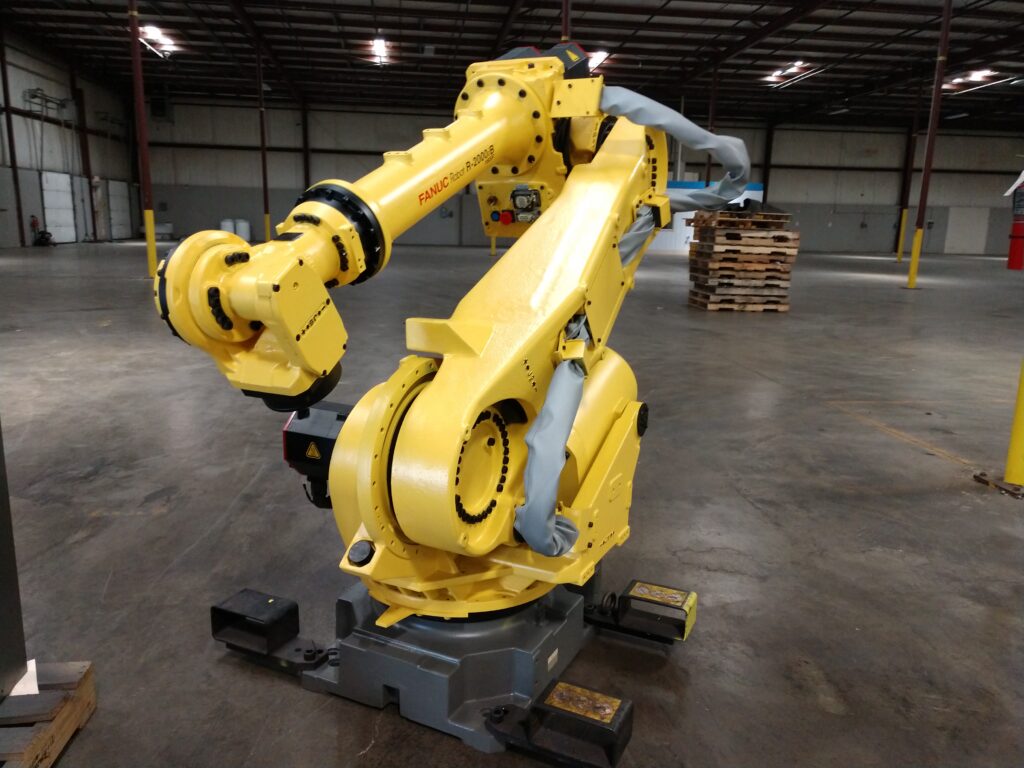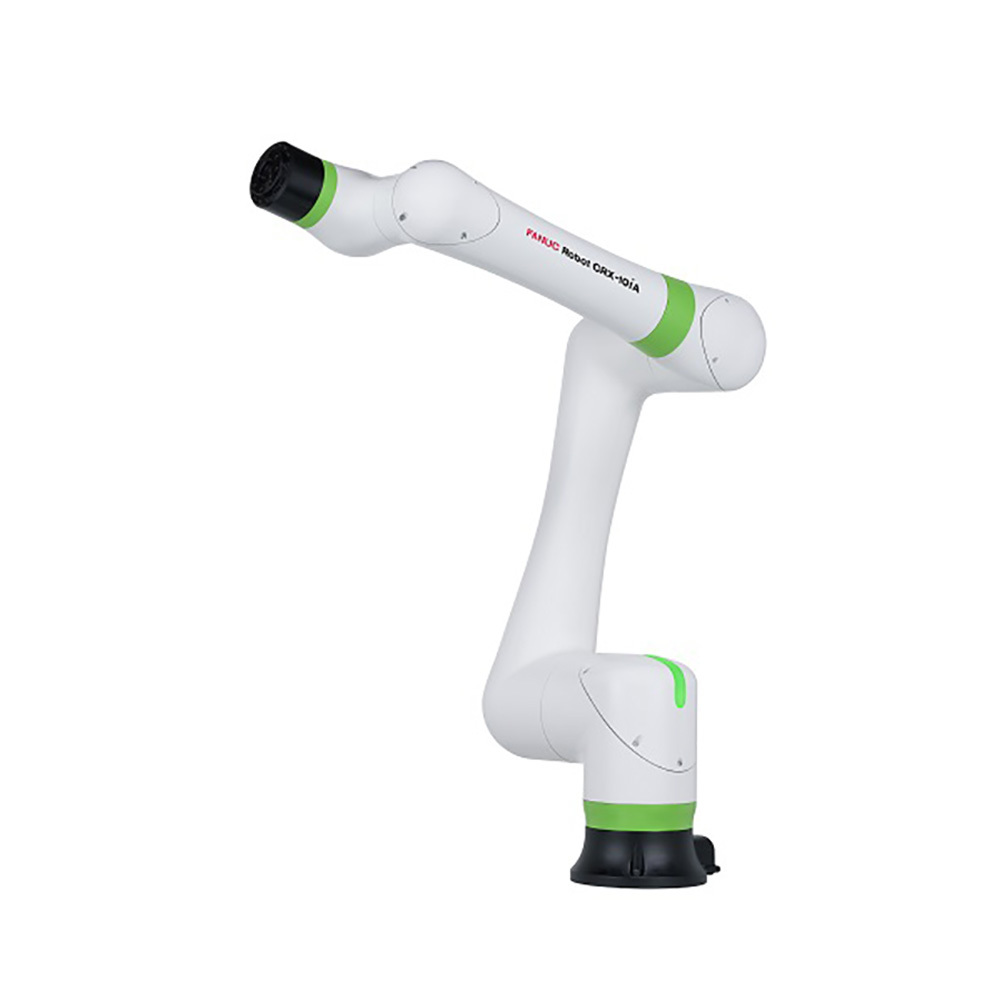Manufacturing companies are finding more and more benefits to automating their assembly lines and other parts of their business. One of the most popular robots that manufacturers are selecting for their new applications is the 6-axis robot. The range of motion and functionality of the six-axis robot allow the robot to simulate the human arm’s complex movements. Not only do you have your standard industrial six axis robot in many manufacturing companies, their smaller counterpart the cobot, or collaborative robot is seen more and more. While the cobot is also a six-axis robot, it has several characteristics that make it very different from the traditional six axis robot. But, more about that later.

What Are the Six Axis of an Industrial Robot?
- Axis 1
This axis, located at the robot base, acts as the robot’s waist allowing it to rotate from left to right. This axis can be known by different names depending on the manufacturer. Example parts include Motoman S and Fanuc J1.
- Axis 2
This axis also acts as the robot’s waist and allows the robot to extend forward and backward. This axis can be known by different names depending on the manufacturer. Example parts include Motoman L and Fanuc J2.
- Axis 3
The axis acts as the robot’s shoulder and extends the robot’s vertical reach. It allows the upper arm to raise and lower. This axis can be known by different names depending on the manufacturer. Example parts include Motoman U and Fanuc J3.
- Axis 4
Working in conjunction with the axis 5, this axis rotates the upper arm in a circular motion moving parts between horizontal to vertical orientations. This axis can be known by different names depending on the manufacturer. Example parts include Motoman R and Fanuc J4.
- Axis 5
This axis allows the wrist of the robot arm to tilt up and down. The pitch, or bend, motion of this axis is up and down, much like opening and closing a box lid. This axis can be known by different names depending on the manufacturer. Example parts include Motoman B and Fanuc J5.
- Axis 6
This is the wrist of the robot arm. It is responsible for a twisting motion, allowing it to rotate and is usually capable of more than a 360 degree rotation in either a clockwise or counterclockwise direction. This axis can be known by different names depending on the manufacturer. Example parts include Motoman T and Fanuc J6.
Uses of 6-Axis Robots in Manufacturing
The overall flexibility, strength and reach make the six-axis robot ideal for manufacturing. Six axis robots can bring a higher level of precision to their applications by having increased motion control capabilities.
Some tasks commonly used in manufacturing automation are:
- Material handling
- Part picking and part handling
- Stacking and sorting
- Assembly
- Packaging and palletizing
- Painting
Industries Seeing the Benefits of Automating their Manufacturing
- Metals
- Logistics
- Automotive
- Aerospace
- Consumer Goods
- Food and Beverage
- Pharmaceuticals
6-Axis Cobots for Smaller Manufacturing Payloads

But what are cobots? Collaborative robots or “cobots” tend to be smaller and more lightweight while still maintaining their six degrees of freedom. Cobot systems require no safety barriers due to their new sensor technologies and shut off systems that immediately deactivate the cobot should it come in close contact with a human. The lack of safety barriers decreases the amount of space the cobot’s workstation and welding cart takes up on the factory floor, making it a popular choice for some plant managers.
Manufacturing Robots Working in Tandem with Humans
Designed to be able to work in tandem with humans, these cobots are able to be programmed easily and in most cases able to be reprogrammed to do a different task without having to change your entire production layout. This allows you to be able to automate small batch runs and frequent line change-overs.
The way these six axis robots are able to contort their bodies to get to hard-to-reach places make them ideal for a variety of tasks within manufacturing. Everything from painting and welding to more complex assembly line tasks that include tough to reach angles.
FanucWorld and T.I.E. Industrial is your go-to supplier when it comes to refurbished 6-axis robots for manufacturing. To find out more of what we have in stock or request a quote, fill out our form on this page. You can also browse our robot parts on our website and request a quote for a replacement or repair for your part.
Was this helpful?
3 / 0